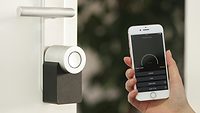Amid ever-changing technology, embracing modern security solutions and capabilities can be a challenge for many, especially those who have spent years accustomed to tried-and-true products, like the traditional keyed padlock. Today, decision makers working in the security sector are tasked with sorting through the blitz of new technology offerings and introductions. Challenges run a wide gamut, and transitioning to new systems or solutions can be daunting. Because many industry professionals are already comfortable with their tried-and-true products, it is also possible they simply do not yet know the benefits and ease of embracing modern solutions.
Migrating from mechanical locking solutions to electronic access control (EAC) is a strong case in point. Despite the advancements of modern-day security products and software over the years, EAC and its benefits are still largely misunderstood across manufacturing, construction and telecom industries. While mechanical and keyed security solutions including padlocks, door locks and lock boxes were the standard for decades — and for good reason — it’s important to understand the common misconceptions or “myths” that may prevent an operations or security manager from implementing electronic solutions.
The reality is that advancements in technology have made it easier than ever for security managers to provide more sophisticated solutions by utilizing EAC. Today’s access control solutions enable organizations of all kinds to secure critical assets, equipment, tools and access points more effectively and efficiently. The evolution of EACs have allowed businesses and facilities of all sizes to save time and money by streamlining and tracking who has access to critical equipment and assets across a myriad of facilities.
While security managers and organizations as a whole are increasingly becoming educated on the benefits of EAC, the following are seven myths and misconceptions all security professionals should be aware of.
Myth # 1: EAC solutions are applicable for doors only.
While it is true that EAC solutions were initially developed for door control and hard-wired systems, the technology now extends to standalone products that can be used in a variety of applications. Electronic padlocks and lock boxes, for instance, are commonly connected with EAC software and used to secure fences, storage sheds, garages, trailers and other outdoor equipment and materials, as well as indoor cabinets, lockers and interior storage areas.
Myth # 2: EAC solutions are expensive.
Out-of-pocket costs are unavoidable when replacing or implementing additional security measures, but the benefits associated with EAC often deliver a strong return on investment within just a few months. It may seem counterintuitive at first, but EAC often puts money back in the pockets of companies and its security departments by eliminating the time and overhead costs previously spent on changing locks and replacing keys when they’re lost, stolen, duplicated or simply not turned in by former employees.
Enterprise security managers can also get more out of their EACs by choosing solutions with long battery life that save money over time by minimizing the costs of battery replacement. Electronic locks only use power when activated by a user’s mobile credential, which can significantly reduce maintenance and battery replacement costs over time. Additionally, companies can save money by choosing EAC solutions that charge no additional monthly or data usage fees for the access control software.
Myth #3: EAC solutions are complicated.
The common notion that new features or capabilities imply added complexities is generally misguided. In fact, modern-day access control technology was created to address the pain points of traditional mechanical security solutions. Organizations that implement mechanical solutions, for example, must often deal with delays and downtime before gaining authorized access to sensitive tools and equipment. With EAC solutions, employees can have self-service access to critical equipment via their mobile phones or other credentialing methods, and security managers can benefit from the flexible access control and enhanced monitoring capabilities.
EAC solutions also make it even easier for security managers to control access to their facilities, including when and where. Depending on an organization’s needs, access can be determined by time, date, user, group or even time-restricted temporary access. This feature allows EAC to be more flexible than traditional keys, enabling security managers to safely and securely accommodate periodic contractors or temporary guests, remotely. Going far beyond the capabilities of traditional mechanical access, EAC solutions also provide visibility — and reporting data — into critical areas to easily and precisely monitor who has accessed specific equipment, when it was accessed and where it was accessed. This audit trail is especially beneficial in scenarios of theft and injury liability.
Some security decision makers may fear that an EAC system won’t integrate with their existing security solutions. However, EAC is often designed to do just that, allowing organizations to supplement or upgrade their current security system, rather than implement a new one.
Myth #4: EAC solutions are not as durable.
Importantly, electronic solutions are often made with the same exact materials as their mechanical counterparts. The misconception that EAC solutions sacrifice durability because they contain more advanced technology is simply that: a misconception. For example, there are Bluetooth padlocks currently on the market made with wide metal bodies and boron alloy shackles that provide the same maximum resistance to cutting and sawing as heavy-duty mechanical locks.
This standard of durability also applies to outdoor applications. Many EAC solutions feature weather-resistant materials to prevent rusting and other deterioration caused by harsh outdoor conditions. In fact, keyless EAC devices are often better protected from the elements because they do not have keyholes that are susceptible to corrosion. Overall, it is important to note that EAC solutions are rigorously tested with the same volume of performance cycles as their mechanical counterparts.
Myth #5: Bluetooth-enabled EAC solutions are not secure.
Bluetooth is one of the most popular short-range radio wave communication standards used in smartphone credential systems for a reason. When Bluetooth is used in EAC applications specifically, users’ mobile credentials remain protected behind a smartphone’s security parameters, such as biometrics or personal identification numbers (PINs). Once a biometric PIN or password is entered to access the phone, the user automatically sets up two-factor access control verification.
EAC solutions harness this existing Bluetooth technology to establish a secure connection and an encrypted transmission to the user’s smartphone. Some EAC solutions go even further by leveraging the added security of 256-bit, end-to-end military-grade encryption with their Bluetooth-enabled capabilities, offering protection against hacking, snooping or tampering.
Many Bluetooth solutions also follow best practice security standards such as the Open Web Application Security Project (OWASP) to further enhance digital security. Online communities like this one produce free documentation, tools and other web application resources for security managers and their organizations.
Myth #6: Keys are more reliable than EAC solutions.
Though physical keys are seen as “tried-and-true” by many in the security industry, the reality is that they present accountability challenges, especially when shared among personnel and contractors. Outside contractors often need access to a facility during non-business hours, which soon becomes difficult to manage with physical keys that can easily be lost, duplicated or even fall into the wrong hands. Security managers responsible for overseeing remote and satellite locations have the added burden traveling across a campus, town, city or state to deliver keys can be time-consuming and reduce productivity.
Organizations that invest in EAC can authorize access instantly and remotely on an as-needed basis, and also benefit from audit trails, which can be used to monitor and identify who is accessing facilities, when they’re being accessed and where the users are gaining access. Modern EAC solutions also alleviate the expense and risks associated with multiple doors that share the same key or facilities using master key systems.
Myth #7: EAC solutions are inaccessible if the phone/battery dies.
Nearly all electronic solutions provide back-up access entry methods. In the event a lock battery needs to be replaced or the user’s phone is dead or not on hand, they can simply enter the lock’s manual, directional or numeric code.
While EAC batteries are created to withstand long periods of time, in many cases more than two years, many electronic solutions offer multiple ways to combat these circumstances, including low-battery notifications or reminders and battery jumps that allow for temporary access if a battery dies while locked.
Making the Transition
Electronic access control is becoming the standard for security, and it is not too late for security managers to explore various solutions on the market. As a whole, the EAC market is forecasted to continue expanding due to an increased need for enhanced physical and data security at various residential, commercial, industrial, and government and defense facilities. Furthermore, security managers who have not yet made the transition to EAC risk being vulnerable to today’s increasingly complex and covert security threats.
With its overall reliability, cost-efficient scalability and ability to integrate seamlessly into existing security solutions, EAC has proven to be worth the investment across a range of industries, both now and in the future.




